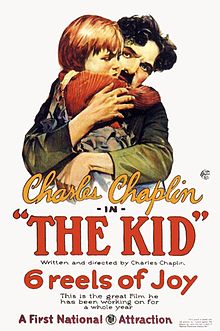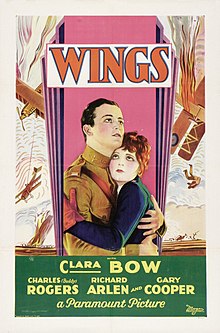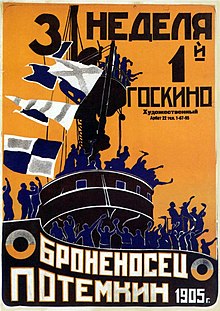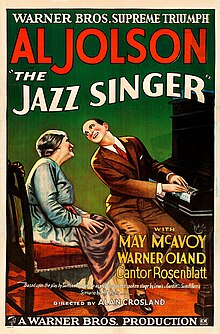One question people always ask is what are the greatest films of all-time. There is a lot of different criteria that goes into coming up with a list and it all depends on your taste mainly due to all film being subjective and everyone liking or disliking the same/different things. I've decided to do a new series in which I try to decide what I think are the greatest films of all-time. One way to help do that is by deciding what the best films of each decade are. Each month until October I will choose what I think are the best films from each decade and in November I will take the number one films in each decade and put them into a top 10 greatest films of all-time list. Now the list will bot be based on scores or my own personal lists, but based off the popularity of each film and how much of an effect it has had or is having on film today. For example my favorite film of all-time is The Dark Knight, but that doesn't necessarily mean that I think it is the greatest film of its decade. For this month I'm going to bring you the top 10 films of the 1920's. So without further ado...
10. The Passion of Joan of Arc

This film is one of the more emotional films of the decade as well as one of the first bio-pics. Renée Jeanne Falconetti does a masterful job of capturing the emotion of Joan of Arc and what she was going through at the time. It provided a lot of low angle shots in which the judges of her trail looked down up her and it switches back and forth between those shots and close-ups to really get the emotion in every scene. It's one of the more authentic films to be ever made as director Carl Theodor Dreyer used the real court transcripts of the account. It's legacy on film is that it is the first bio-pic and its just so authenticate that it inspires filmmakers to really just make you as an audience member feel that you are living the character's story and understand everything that is going on.
9. The Phantom of the Opera

One of the reasons why this film is put on the list is mainly due to the fact that it has the magnificent Lon Chaney. Other than The Hunchback of Notre Dame this is the role he is most recognized for. Just like The Hunchback of Notre Dame he is able to commit to the role with all of the prosthetic makeup and he gives some of the best performances of the decade. As for the movie it was one of the first films based off of book which eventually led Andrew Lloyd Webber to create the Broadway play. Had this film not been made then the play may never had existed and we wouldn't have had the film adaptation as well.
8. The General

Buster Keaton. Just saying that automatically makes you consider the film as one of the greatest of all-time. While this may not be the funniest film he ever did, it is the film where he risked the most. Keaton always did his own stunts and in this film he was forced to move across a fully moving train and there were stunts in which he could've and almost died. Not only did Keaton perform such dangerous stunts, but this was the first film to use a major set piece for a stunt. It involves a real-life train falling off of a collapsing bridge and it was one of the more difficult shots to complete as the filmmakers had only one shot to get it right and they did and now the shot is one of the most iconic shots in cinematic history.
7. The Kid

Like Buster Keaton, Charlie Chaplin is one if the most iconic figures in the silent era. In the silent era Chaplin was able to create one of the more iconic characters of all-time know as "The Tramp". The Tramp has appeared in a lot of different films and has done so many different types of roles and this was his first full length feature film with him as the lead (his first film appearance to the public was the short film "Kid Auto Races at Venice"). This film was a film in which Chaplin was able to both the show the physical humor, but also the emotional side of the character as he cares for this abandoned child which reminds him of himself.
6. Wings

You can't have a top 10 of a decade list without at least a few Best Picture winners and you can't do a best of the 1920's without the first ever Best Picture winner. Not only is it on the list due to it being the first film to ever win Best Picture, but due to all of the technical achievements that film garnered. The film was the first film to make aerial battle scenes seem real and films after this one have basically recalled back to this film and made their own movies based one what this film did. It was also the first film to show nudity and two men kissing so it was a pioneer for future films not only in the technical aspect, but in the character aspect as well. The ending battle scene is also one of the most beautiful scenes in the history of film.
5. Battleship Potemkin

In an era where quite a few people lived through two World Wars, this film was the first propaganda film. Now while it doesn't deal with an event during World War I, it does deal with Russia and one of the events that led to the Russian Revolution which eventually led to the country becoming known as The Soviet Union. One of the most iconic scenes is the Odessa steps scene. In that scene we get the first ever montage in a film and the sharp editing and fine cuts. Now while the the massacre on the Odessa Steps never actually ever happened in real life, director S.M. Eisenstein added the scene for emotional intent and with the montage edit of all of the various murders taking place makes the scene feel authentic. It also takes the storytelling route of a play as the film is broken down into 5 acts all dealing with various aspects of the rebellion.
4. Nanook of the North

Nanook of the North is a film that isn't a true documentary, but it does have a lot of elements of a documentary. It takes a look at some things the Inuit tribe does do as well as a few staged a events that make the film a little different than a standard documentary known as a docudrama. However the film does really follow Nanook and his life as an Alaskan Indian. It focuses on his family and how they survive on a daily basis in the cold arctic north. It was the first film of its kind to show a group of people outside of North America living off of the land making Nanook one of the most polarizing figures ever to be caught on camera.
3. The Jazz Singer

In an era in which the industry was dominated with silent films, this was the first film to introduce talking in a film which led to beginning of the end for the silent film era and the beginning of the "Talkie" era. Now the film isn't entirely full of sound dialogue, it does have a wide variety of music numbers mixed in with bits and pieces of dialogue. It's also one of the last of the more mainstream films to use blackface which at the time was becoming obsolete.
2. Nosferatu

This is easily one of the most iconic horror films of all-time. Now while it is a film that was made based off Bram Stoker's Dracula, the filmmakers actually never had the rights to make the film based off of the book, but they made it anyway. The film introduced a more intimidating version of Count Dracula and one of the more creepier looking versions as well. The filmmakers used a lot of different colors to film various scenes such as the standard yellow-brown, green and blue which all had various impacts on each scene throughout the film. While the film is based off the story of Dracula, the film has a unique feel to it mostly because of the various colors used, but due to Max Schreck as Count Orlok as he one of the most haunting figures in cinematic history and even more haunting than any other version of Count Dracula that came after this film.
1. Metropolis

I'm betting a lot of you have never seen this film and it's not surprising and if you haven't I highly recommend you do so. This is the first science fiction film in the history of film. It also was one of the first films to use visual effects and helping advance the technology used in films for years to come. It introduced wide shot cityscape shots to help get a sense of the world. It's a film with quite a few different themes mostly based on the social injustice of the time. It's a film that involves a lot of different moving pieces at once using miniatures in wide shots of the city. The most haunting scene of the film is in the very beginning when we see a group of workers marched out after their shift, but next to them is another group marching in slow unison going to work to replace the group leaving. This is easily the greatest film of the 1920's.
So ladies and gentlemen what do you think of the list, what films should be added or deleted and what do you think is the greatest film of the 1920's? Let me know in the comments section below and let your voice be heard.
Jonah Sparks
10. The Passion of Joan of Arc

This film is one of the more emotional films of the decade as well as one of the first bio-pics. Renée Jeanne Falconetti does a masterful job of capturing the emotion of Joan of Arc and what she was going through at the time. It provided a lot of low angle shots in which the judges of her trail looked down up her and it switches back and forth between those shots and close-ups to really get the emotion in every scene. It's one of the more authentic films to be ever made as director Carl Theodor Dreyer used the real court transcripts of the account. It's legacy on film is that it is the first bio-pic and its just so authenticate that it inspires filmmakers to really just make you as an audience member feel that you are living the character's story and understand everything that is going on.
9. The Phantom of the Opera

One of the reasons why this film is put on the list is mainly due to the fact that it has the magnificent Lon Chaney. Other than The Hunchback of Notre Dame this is the role he is most recognized for. Just like The Hunchback of Notre Dame he is able to commit to the role with all of the prosthetic makeup and he gives some of the best performances of the decade. As for the movie it was one of the first films based off of book which eventually led Andrew Lloyd Webber to create the Broadway play. Had this film not been made then the play may never had existed and we wouldn't have had the film adaptation as well.
8. The General

Buster Keaton. Just saying that automatically makes you consider the film as one of the greatest of all-time. While this may not be the funniest film he ever did, it is the film where he risked the most. Keaton always did his own stunts and in this film he was forced to move across a fully moving train and there were stunts in which he could've and almost died. Not only did Keaton perform such dangerous stunts, but this was the first film to use a major set piece for a stunt. It involves a real-life train falling off of a collapsing bridge and it was one of the more difficult shots to complete as the filmmakers had only one shot to get it right and they did and now the shot is one of the most iconic shots in cinematic history.
7. The Kid

Like Buster Keaton, Charlie Chaplin is one if the most iconic figures in the silent era. In the silent era Chaplin was able to create one of the more iconic characters of all-time know as "The Tramp". The Tramp has appeared in a lot of different films and has done so many different types of roles and this was his first full length feature film with him as the lead (his first film appearance to the public was the short film "Kid Auto Races at Venice"). This film was a film in which Chaplin was able to both the show the physical humor, but also the emotional side of the character as he cares for this abandoned child which reminds him of himself.
6. Wings

You can't have a top 10 of a decade list without at least a few Best Picture winners and you can't do a best of the 1920's without the first ever Best Picture winner. Not only is it on the list due to it being the first film to ever win Best Picture, but due to all of the technical achievements that film garnered. The film was the first film to make aerial battle scenes seem real and films after this one have basically recalled back to this film and made their own movies based one what this film did. It was also the first film to show nudity and two men kissing so it was a pioneer for future films not only in the technical aspect, but in the character aspect as well. The ending battle scene is also one of the most beautiful scenes in the history of film.
5. Battleship Potemkin

In an era where quite a few people lived through two World Wars, this film was the first propaganda film. Now while it doesn't deal with an event during World War I, it does deal with Russia and one of the events that led to the Russian Revolution which eventually led to the country becoming known as The Soviet Union. One of the most iconic scenes is the Odessa steps scene. In that scene we get the first ever montage in a film and the sharp editing and fine cuts. Now while the the massacre on the Odessa Steps never actually ever happened in real life, director S.M. Eisenstein added the scene for emotional intent and with the montage edit of all of the various murders taking place makes the scene feel authentic. It also takes the storytelling route of a play as the film is broken down into 5 acts all dealing with various aspects of the rebellion.
4. Nanook of the North

Nanook of the North is a film that isn't a true documentary, but it does have a lot of elements of a documentary. It takes a look at some things the Inuit tribe does do as well as a few staged a events that make the film a little different than a standard documentary known as a docudrama. However the film does really follow Nanook and his life as an Alaskan Indian. It focuses on his family and how they survive on a daily basis in the cold arctic north. It was the first film of its kind to show a group of people outside of North America living off of the land making Nanook one of the most polarizing figures ever to be caught on camera.
3. The Jazz Singer

In an era in which the industry was dominated with silent films, this was the first film to introduce talking in a film which led to beginning of the end for the silent film era and the beginning of the "Talkie" era. Now the film isn't entirely full of sound dialogue, it does have a wide variety of music numbers mixed in with bits and pieces of dialogue. It's also one of the last of the more mainstream films to use blackface which at the time was becoming obsolete.
2. Nosferatu

This is easily one of the most iconic horror films of all-time. Now while it is a film that was made based off Bram Stoker's Dracula, the filmmakers actually never had the rights to make the film based off of the book, but they made it anyway. The film introduced a more intimidating version of Count Dracula and one of the more creepier looking versions as well. The filmmakers used a lot of different colors to film various scenes such as the standard yellow-brown, green and blue which all had various impacts on each scene throughout the film. While the film is based off the story of Dracula, the film has a unique feel to it mostly because of the various colors used, but due to Max Schreck as Count Orlok as he one of the most haunting figures in cinematic history and even more haunting than any other version of Count Dracula that came after this film.
1. Metropolis

I'm betting a lot of you have never seen this film and it's not surprising and if you haven't I highly recommend you do so. This is the first science fiction film in the history of film. It also was one of the first films to use visual effects and helping advance the technology used in films for years to come. It introduced wide shot cityscape shots to help get a sense of the world. It's a film with quite a few different themes mostly based on the social injustice of the time. It's a film that involves a lot of different moving pieces at once using miniatures in wide shots of the city. The most haunting scene of the film is in the very beginning when we see a group of workers marched out after their shift, but next to them is another group marching in slow unison going to work to replace the group leaving. This is easily the greatest film of the 1920's.
So ladies and gentlemen what do you think of the list, what films should be added or deleted and what do you think is the greatest film of the 1920's? Let me know in the comments section below and let your voice be heard.
Jonah Sparks
No comments:
Post a Comment